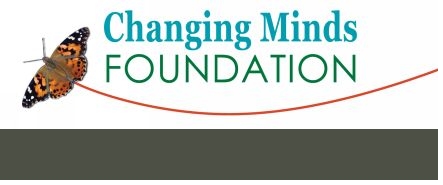
Neurobiology of Disease
Hippocampal Long-Term Potentiation Suppressed by Increased Inhibition in the Ts65Dn Mouse, a Genetic Model of Down Syndrome
Alexander M. Kleschevnikov,1 Pavel V. Belichenko,1 Angela J. Villar,3 Charles J. Epstein,3 Robert C. Malenka,2 and William C. Mobley1
1Department of Neurology and Neurological Sciences, and the Institute for Neuroscience, and 2Nancy Pritzker Laboratory, Department of Psychiatry, Stanford University Medical School, Stanford University, Stanford, California 94305, and 3Department of Pediatrics, University of California, San Francisco, San Francisco, California 94143
Abstract
Although many genetic disorders are characterized by cognitive failure during development, there is little insight into the neurobiological basis for the abnormalities. Down syndrome (DS), a disorder caused by the presence of three copies of chromosome 21 (trisomy 21), is characterized by impairments in learning and memory attributable to dysfunction of the hippocampus. We explored the cellular basis for these abnormalities in Ts65Dn mice, a genetic model for DS. Although basal synaptic transmission in the dentate gyrus was normal, there was severe impairment of long-term potentiation (LTP) as a result of reduced activation of NMDA receptors. After suppressing inhibition with picrotoxin, a GABAA receptor antagonist, NMDA receptor-mediated currents were normalized and induction of LTP was restored. Several lines of evidence suggest that inhibition in the Ts65Dn dentate gyrus was enhanced, at least in part, because of presynaptic abnormalities. These findings raise the possibility that similar changes contribute to abnormalities in learning and memory in people with DS and, perhaps, in other developmental disorders with cognitive failure.
Pharmacotherapy for cognitive impairment in a mouse model of Down syndrome.
Fernandez F, Morishita W, Zuniga E, Nguyen J, Blank M, Malenka RC, Garner CC.
Department of Psychiatry and Behavioral Sciences, Nancy Pritzker Laboratory, Stanford University, Palo Alto, California 94304-5485, USA.
Ts65Dn mice, a model for Down syndrome, have excessive inhibition in the dentate gyrus, a condition that could compromise synaptic plasticity and mnemonic processing. We show that chronic systemic treatment of these mice with GABAA antagonists at non-epileptic doses causes a persistent post-drug recovery of cognition and long-term potentiation. These results suggest that over-inhibition contributes to intellectual disabilities associated with Down syndrome and that GABAA antagonists may be useful therapeutic agents for this disorder.
PMID: 17322876 [PubMed - in process]
Bilobalide, a sesquiterpene trilactone from Ginkgo biloba, is an
antagonist at recombinant a1h2g2L GABAA receptors
Shelley H. Huanga, Rujee K. Dukea, Mary Chebibb, Keiko Sasakic,
Keiji Wadac, Graham A.R. Johnston
Adrien Albert Laboratory of Medicinal Chemistry, Department of Pharmacology, Faculty of Medicine, University of Sydney, Sydney, NSW 2006, Australia
Pharmaceutical Chemistry, Faculty of Pharmacy, University of Sydney, Sydney, NSW 2006, Australia
Department of Hygienic Chemistry, Faculty of Pharmaceutical Sciences, Health Sciences University of Hokkaido, Ishikari-Tobetsu, Japan
Herbal Medicines Research and Education Centre, Faculty of Pharmacy, University of Sydney, Sydney, NSW 2006, Australia
Abstract
The sesquiterpene trilactone bilobalide is one of the active constituents of the 50:1 Ginkgo biloba leaf extract widely used to enhance memory and learning. Bilobalide was found to antagonize the direct action of g-aminobutyric acid (GABA) on recombinant a1h2g2L GABAA receptors. The effect of bilobalide on the direct action of GABA at a1h2g2L GABAA receptors expressed in Xenopus laevis oocytes using two-electrode voltage-clamp method was evaluated and compared with the effects of the classical GABAA receptor competitive antagonist bicuculline and noncompetitive antagonist picrotoxinin. Bilobalide (IC50 = 4.6F0.5 AM) was almost as potent as bicuculline and pictrotoxinin (IC50 = 2.0F0.1 and 2.4F0.5 AM, respectively) at a1h2g2L GABAA receptors against 40 AM GABA (GABA EC50). While bilobalide and picrotoxinin were clearly noncompetitive antagonists, the potency of bilobalide decreased at high GABA concentrations suggesting a component of competitive antagonism.
D 2003 Elsevier Science B.V. All rights reserved.


















